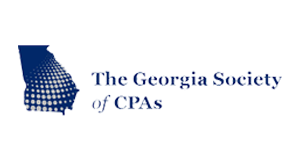If you’re like most people, retirement planning probably feels like one big, confusing puzzle. What do you do? Where do you stick your money? What are your best options?
If your head is spinning, I’ve got good news:
When it comes to retirement accounts, you have more options than you realize.
Here’s a quick look at six different types of retirement accounts, so you can determine which one may be best for you.
1. A Traditional IRA
Let’s start off with a traditional IRA, which stands for an “individual retirement account.” (So, by definition, an IRA can’t be a joint account with a spouse. Each spouse needs to have their own IRA. )
Here’s how a traditional IRA works:
- You put money in pretax, and you get a tax deduction in the year of your contribution.
- Your money grows tax-deferred. When you begin withdrawing from your account, you’ll be taxed at whatever your income tax bracket is then.
- There’s a contribution limit of $6,000 per year—though, if you’re over the age of 50, you can contribute an additional $1,000 annually.
- There’s a 10% penalty if you withdraw money prior to age 59 1/2.
- There are required minimum distributions, meaning that you have to start taking money out at age 72.
- There are many investment options that you can pick inside of your IRA. The IRA is just the wrapper that lets everybody know that the money in it has not been taxed yet. It will be taxed when you take the distribution.
2. A Roth IRA
Here are the details of the rules governing a Roth IRA:
- This is money that you put in after you pay taxes on it.
- It grows in the account and then you get to take tax-free distributions as long as you are over the age of 59 1/2 and you’ve had the account for five years.
- It has the same contribution limit as the traditional IRA of $6,000 per year—with the same “catch up” option of being allowed to contribute an extra $1,000 annually if you’re over 50 years old.
- Like a traditional IRA, this also is an individual account.
- You have many investment options to pick from. This is also a wrapper that lets everyone know that it is a Roth IRA, so allowable distributions will be tax-free.
3. A Traditional 401(k)
Here are the details of this kind of 401(k).
- This is set up through the company that you work for.
- Money that gets put here is pretax; it grows tax-deferred and you’ll get a tax deduction in the year of your contribution.
- You can contribute up to $19,500 per year—and if you’re over age 50, you can contribute another $7,000 annually on top of that.
- All distributions will be taxed at your tax bracket.
- This is probably the most common account people have who work for organizations.
- For federal employees, this would be your TSP (i.e. Thrift Savings Plan) account.
4. A Roth 401(k)
A quick snapshot:
- A Roth 401(k) has the same contribution limits as a Traditional 401(k).
- The main difference is that you are putting money in after tax, meaning distributions will be tax-free as long as you wait until after the age of 59 and 1/2 to take a distribution.
5. A SIMPLE IRA
How does this retirement account work?
- A SIMPLE IRA (Savings Incentive Match Plan for Employees Individual Retirement Account) is a retirement plan for small businesses with fewer than 100 employees.
- SIMPLE IRAs are similar to other individual retirement accounts (IRAs), but—as the acronym implies—are easier to set up and administer. This is why many small businesses offer workers a SIMPLE IRA plan in lieu of a 401(k).
- The employee contribution limits on a SIMPLE IRA are lower than those for a 401(k).
- If you work for yourself, you’re allowed to contribute to a SIMPLE IRA, although there may be better retirement plan options—like a SEP IRA (see below) for the self-employed, which—like a 401(k)—allows for larger contributions.
- Money is put into a SIMPLE IRA pretax, which means that withdrawals will be taxed.
- You must abide by the required minimum distributions at age 72.
6. A SEP IRA
“SEP” stands for simplified employee pension. “IRA,” as we’ve already noted, stands for individual retirement account. Thus, a SEP IRA is a basic individual retirement account, much like a traditional IRA.
Some details:
- SEP IRAs are for business owners, and contributions are tax-deductible.
- Investments grow tax-deferred until retirement, when distributions are taxed as income.
- Generally, SEP IRAs are best for self-employed people or small-business owners with few or no employees. Here’s why: If you have employees whom the IRS considers eligible participants in your plan, you must contribute on their behalf, and those contributions must be an equal percentage of compensation to your own.
- Because of that rule requiring equal contributions as a percentage of compensation, a SEP IRA is generally best for self-employed people or small-business owners with few or no employees.
- One of the big benefits to a SEP IRA is that you can contribute up to $57,000 or 25% of your net earnings annually. This has the highest contribution limits of any of the retirement options.
- Since the SEP IRA is an IRA, it is subject to the same age 59 1/2 rule for avoiding the 10% early withdrawal penalty
- It also has the required minimum distribution at age 72.
For the record, our team at Christy Capital has helped numerous federal retirees set up the correct retirement account as they’ve begun new careers as self-employed people. Those clients would be the first to tell you that setting up the right account for the right situation made a big difference.
If you’re tired of trying to figure out the retirement puzzle on your own, visit our website. In the upper right-hand corner, you’ll see a button that says Talk with an Advisor. Click there and you’ll be able to send us a brief email message. We’ll be in touch right away.
Or, if you prefer, you can call (866) 331-7749 and speak right now with one of our expert advisors.







